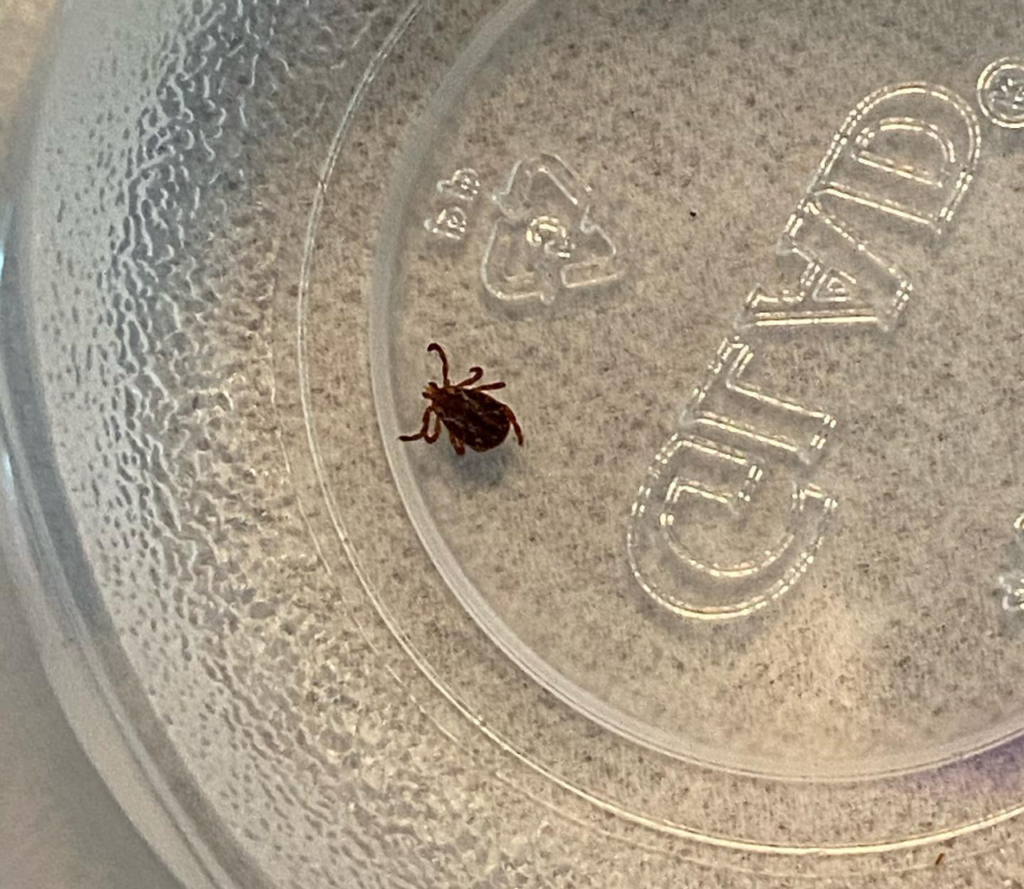As weather becomes warmer, ticks begin to come out of their dormant period and onto our hiking trails. Ticks can seem scary, but luckily there are preventative measures you can take to ease any tick-anxiety. Let’s learn a little bit about ticks, preventing them and removing them.
Want to test your tick knowledge before reading? Take this short quiz!
About Ticks
In Ohio, there are about a dozen species of ticks. However, most of these species are rarely encountered because they primarily feed on wild animals. The three species you are most likely to spot on trails or, unfortunately, on people or pets, are the American dog tick, the black-legged tick, and the lone star tick.
Most tick bites create little more than swelling. However, some ticks are more dangerous than others. Ticks are commonly associated with Lyme disease, a bacterial infection caused by a bite that can cause rash, fever, headache, and fatigue. Not all ticks carry Lyme disease, but it is important to be cautious and aware.

Preventing Ticks
If you are going on a hike, stay on the trails and avoid wooded brushy areas with high grass and leaf litter. Wear long socks, long pants and a hat especially if you have long hair. To ensure ticks stay on the outside of your clothing, tuck your pants into your socks or boots and tuck your shirt in your pants.
After your hike, check your whole body for ticks. Start around your hairline, check behind your ears, where your shirt meets your neck, your waistline, and around your socks. Examine your gear and clothes to ensure no ticks are hitching a ride to attach later.
Once home, wash your hiking gear in hot water, or tumble dry your clothes in a dryer on high heat for at least ten minutes to ensure you have killed any ticks. Remember to shower after being outdoors!
Talking to Kids About Ticks
If you are hiking with children, make sure to take the time to help them look for ticks too! This can be scary for children, so it is important to stay calm and ensure their safety. At the Cuyahoga Valley Environmental Education Center, we often call ticks “hitchhikers” and emphasize the importance of not taking anything—seeds, plants, or critters—out of their habitats.
Removing Ticks
If there is a tick on you, do not panic. Remove the tick as soon as you can using a removal method that is proven to work.
Removing Ticks Using a Tick Key
- Place the key over the tick in the teardrop hole.
- Slide the key flush against the skin to entrap tick in tapered slot.
- Continue pulling quickly in the same direction for proper removal. Do not lift the key.
- Dispose of a live tick by putting it in alcohol, placing it in a sealed bag/container, wrapping it tightly in tape, or flushing it down the toilet. Never crush a tick with your fingers.
- Thoroughly wash hands and the bite area.
Removing Ticks Using Tweezers
- Using fine-tipped tweezers, grasp the tick as close to the skin’s surface as possible.
- Pull away from your skin with steady, even pressure.
- Don’t twist or jerk the tick; this can cause the mouth-parts to break off and remain in the skin. If this happens, remove the mouth-parts with tweezers. If you are unable to remove the mouth-parts easily with clean tweezers, leave it alone and let the skin heal.
- Dispose of a live tick by putting it in alcohol, placing it in a sealed bag/container, wrapping it tightly in tape, or flushing it down the toilet. Never crush a tick with your fingers.
- Thoroughly wash hands and bite area.
It’s important to call your doctor if you can’t remove the tick or start to develop symptoms of Lyme disease in 3-30 days, such as fever, body aches and joint pain, and rash.
Our source of information for this article includes info from The Ohio Department of Health. Visit their website for more information about ticks.
The Conservancy is a nonprofit friends group for Cuyahoga Valley National Park. Our goals are to improve visitor experiences, and provide meaningful, life-enhancing programs to our communities. If you would like to join us in protecting the Cuyahoga Valley National Park, please consider supporting your park today.





